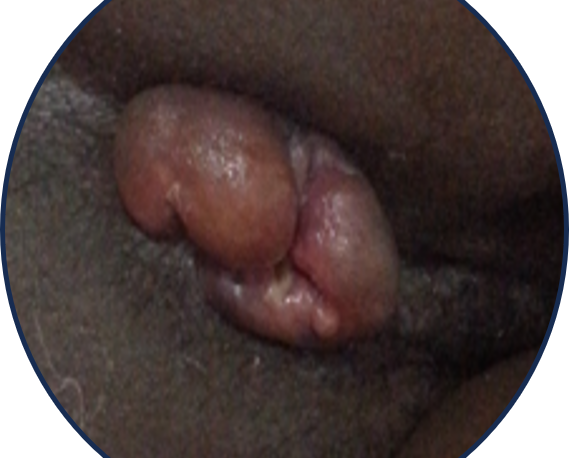Definition
Hemorrhoids are tortuous dilatation and elongation of the venous plexus and overlying cushion in the wall of the anus. Hemorrhoids often present with bright red bleed, edema and prolapse of the anal cushions.
Historical Perspectives
Hemorrhoids from Greek words Heam (blood) and Rhoos ( flow)
In American and English literature hemorrhoids is known as piles. The word pile comes from Latin pila means lump
Authors previously describe hemorrhoids as varicosity (John Hunter) of superior and inferior rectal venous plexus in the wall of the anal canal covered by mucosal cushions, however hemorrhoids and rectal varices are now identified as different entities
The mucosa cushions in the anus are also called hemorrhoidal cushions and they are part of normal anal functional structures. We make a diagnosis of hemorrhoids only when the cushion begin to give symptoms i.e when they become inflamed, edematous and elongated.
Epidemiology
Hemorrhoid occurs globally, the true incidence is difficult to place but some authors report population incidence of around 4-4.4% in the general population.
Hemorrhoid is more common among whites than blacks due to prevalence of low fiber diets and refined foods.
Hemorrhoid is uncommon before the age of 20 years and 50% of the population would have experienced one symptom of hemorrhoids or the other by the age of 50 years and 80% of the population by the age of 80 years.
There is no sex predilection but males tend to reveal their symptoms more than females
Hemorrhoid is the Most common cause of hematochezia world wide, and the risk is higher in higher socioeconomic class due to low fibre diet
Cause
The etio-pathogenesis and exact causes of hemorrhoids are still contested and the theories of cause and evolution or propagation have shifted over the years.
However In discussing the etiology and patho-genesis of hemorrhoids, author and clinicians use terms such as
- Predisposing or Risk factors: these are factors or situations increasing an individual’s risk or chances of experiencing the symptoms
- Precipitating factors which are factors that might worsen the symptoms and signs
The predisposing factors or risk factors and precipitating factors are often complementary, with one or more initiating the condition and others propagating it.
Multiple factor or situations work together to initiate the symptoms and cause progression of the symptoms and different patients have different initiating and precipitating factors. The factors in the patients are often be in vicious cycles.
We may classify the causes as idiopathic (unknown) or secondary
The secondary is when we identify predisposing or precipitating factors, the classification is just discriptive not strict. .
Predisposing factors
Factors increasing the risk or chances of developing hemorrhoids
- Low-fiber diet
- Sedentary lifestyle
- Prolonged standing
- Obesity
- Rapid weight loss or change in bowel habit
- Intra-abdominal mass
- Pregnancy
- Portal hypertension
- Pelvic mass
- Inherited tendencies such as weakness of pelvic structures and suspensory ligaments
Precipitating factors
Factors worsening the symptoms
- Constipation
- Diarrhea
- Straining
